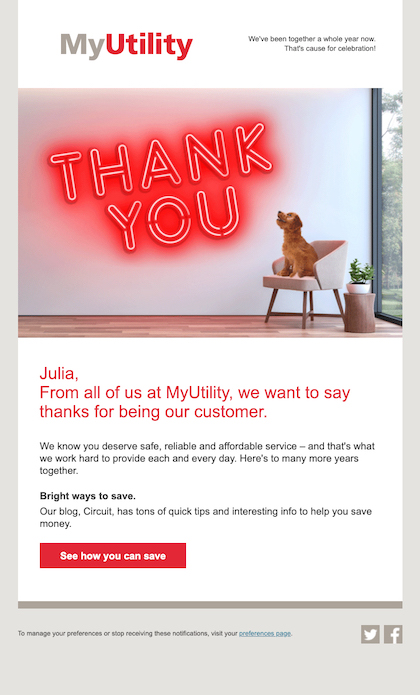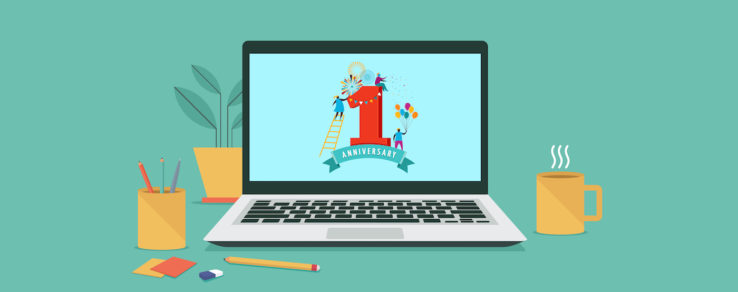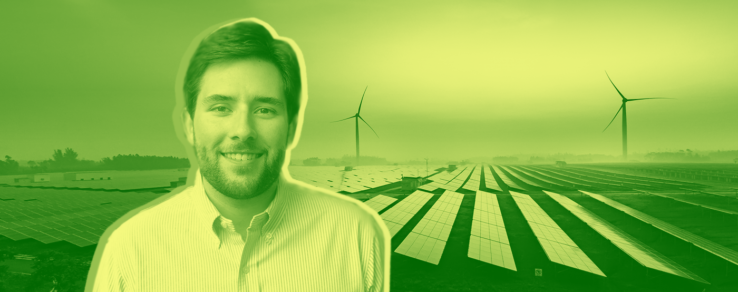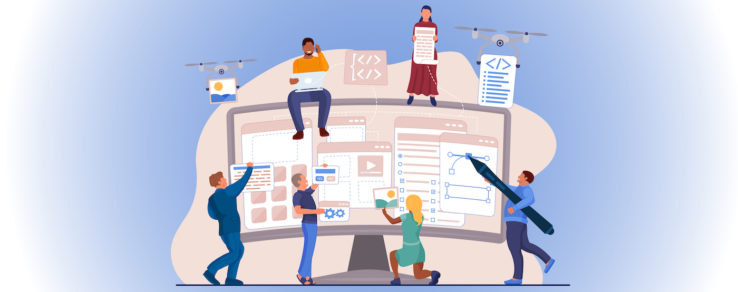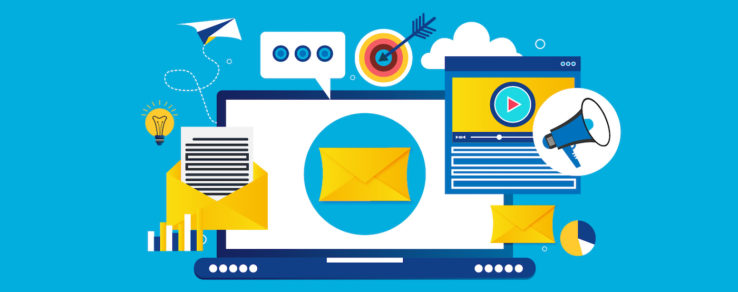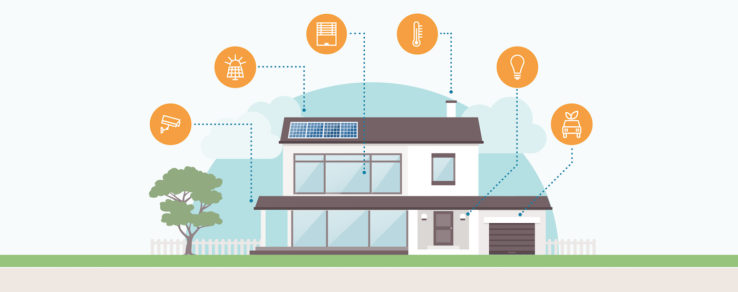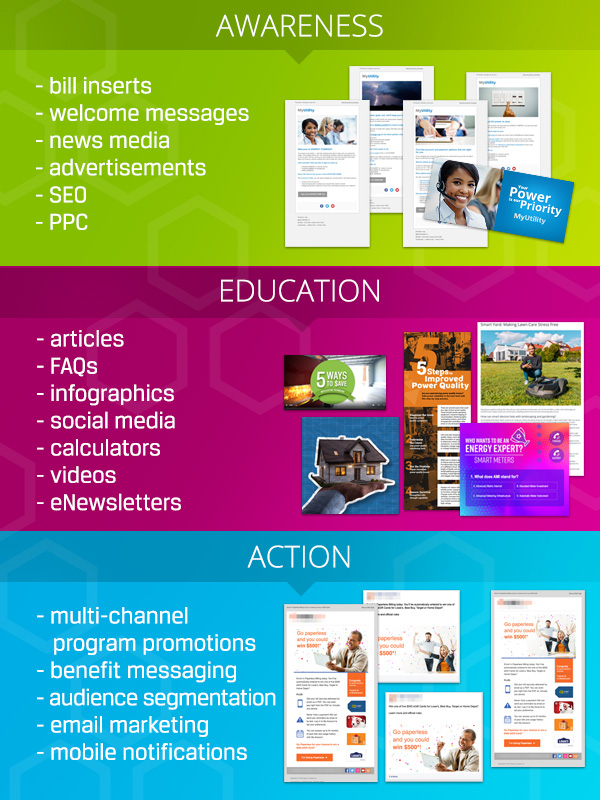Just as AMI replaced analog electric meters, the old-fashioned flat-rate bill will soon give way to a more dynamic and variable way for residential customers to pay for their energy use. An increasing number of energy utilities are introducing time-of-use (TOU) rates.
But are customers ready for the change? Those of us in the utility industry have been thinking about AMI and TOU for so long now it’s easy to forget that this idea will be brand new (and probably quite unexpected) for most customers.
In fact, TOU options represent a major paradigm shift for consumers, not just in how they pay their bills but in how they think about their energy use.
To ensure the successful rollout of these rate programs, energy utilities will need to educate customers, explaining how time-of-use electricity rates work and demonstrating how customers can benefit from taking control of their energy use.
What Are Time-of-Use Rates?
Time-of-use rates (TOU rates) refer to energy metering plans that charge a utility customer based on when they use energy. Rates can vary according to the time of day, season and day (weekday, weekend or holiday). Energy utility companies charge more when electricity demand is higher to encourage customers to spread out energy consumption to off-peak times and promote a more efficient and sustainable electric grid.
Educating Residential Customers on TOU Rates
Getting customers on board with TOU rates may sound daunting, but it doesn’t have to be.
To encourage customer enrollment, the first step is awareness, then education and finally action. You can’t expect program enrollment without the first two steps.
A study from the Smart Energy Consumer Collaborative (SECC) found that fewer than 40% of customers are aware that any kind of alternative rate plan even exists and many people don’t fully understand how their electric bills work. Utility marketers have their work cut out for them.
Indeed, the SECC study found that nearly half of residential consumers do not know what type of electricity rate plan they currently have. Of those who are aware, nearly all of them said they have a flat-rate plan with static kWh pricing.
But there’s hope. The right content can help educate residential customers about TOU rates.
In fact, 70% of consumers say they prefer to learn about a product or service through content rather than an advertisement. So, promotional emails, ad buys and bill inserts won’t always do the trick, but content can.
Include educational articles, videos, calculators and infographics in emails, eNewsletters, social media and on your energy utility’s website. Provide an FAQ page and resources that help customers answer the question, “When is the best time to use electricity to save money?”
The same SECC survey showed that most customers are open to trying time-of-use rates, especially if they offered the potential to save money. These customers just need some help understanding their options. Use education to lead customers toward TOU rate programs.
Benefits & Messaging for Time-of-Use Rates
Your customers are now aware of TOU billing, and you’ve educated them on your different rate programs. How do you bring them toward action?
To reach customers more effectively, it is important for energy utilities to understand the unique needs of customers and communicate how new rate structures can benefit them specifically.
The advantages of TOU billing are obvious for energy providers: By charging higher rates when energy is more expensive, utilities can either recover the cost of peak generation or prompt customers to shift their use to off-peak hours. With fewer peaks to manage, renewable energy sources can be utilized more consistently, making the grid cleaner and more stable.
That all sounds great for utilities. However, a reliable energy supply isn’t really seen as a benefit by customers. It’s an expectation.
When a customer flips a switch, they expect the lights to go on; at the end of the month, they pay a bill. They don’t spend a lot of time thinking about all the steps in between or even how much it costs. Electricity just happens.
So, how do you get them to care? Researchers have found a few main factors are driving customer enrollment in TOU rate programs:
- The opportunity to save money
- Environmental impacts
- Taking control of energy use
When it comes to savings, the incentive must be big enough. Mark Nabong, a senior attorney and transportation specialist at the Natural Resources Defense Council, explains, “Generally, the savings a customer gets from charging off-peak must be two to three times what they might save if they charged during peak hours.”
Customers are also more likely to enroll when they don’t have to pay extra fees for metering or green power premiums. Added fees erase the feeling of savings, even if the final cost is still lower.
Maybe your customers aren’t responding to your messages about supporting a clean and stable energy supply or the potential for savings. Instead, they may be intrigued with the idea of taking control of their energy use.
For the first time, residential customers will have the power to decide how much they pay for energy with TOU rates.
In the past, customers could save energy through behavioral changes or home improvements that reduced their overall consumption, but they paid the same for energy no matter when they used it. There was no benefit for, say, running the dishwasher overnight instead of during the day.
With TOU billing, customers can save money by simply shifting the same energy use to a different time of day — or benefit even more when their efficiency efforts reduce energy use during peak hours. Customers can control when and how they save, making a real impact on their bills.
Effective Program Promotions for TOU Rates
Alright, you’ve boosted awareness, educated customers and refined your message to talk about benefits. How do you handle program promotions?
Segment your TOU communications.
You could try to reach everyone at once, but we’ve found segmentation to be much more effective. Luckily, you can leverage research that shows who is more likely to enroll in TOU rate programs. Focus your attention on those groups instead of exhausting unlikely customers with mass marketing messages.
- Electric vehicle owners tend to be more willing to try alternative rate structures like TOU billing. Get in front of customers when they’re purchasing an EV or charger and are most engaged. Another idea is targeting customers who are known EV drivers with personalized messaging around TOU rates.
- Those who indicate they care about savings potential over absolute comfort are also more likely to enroll. When onboarding new customers, ask them to rate what’s more important. Those who are interested in savings will be more interested in the benefits of TOU. If you don’t have this level of data, look at demographics to determine lower-income groups who are likely to respond to savings opportunities.
- Customers who have taken zero action on their rate plan and remain enrolled in default programming are primed for TOU communications. They are likely unaware of the options that exist and need to be educated on what’s available. Send them a personalized message and boost awareness.
- Smart thermostat users and utility marketplace customers are also hot targets. SECC’s research found that nearly half (44%) of residential respondents indicated that they would be willing to participate in a time-based pricing program if automation technologies were deployed in their home to shift electricity use to off-peak times. Smart home technology can do just that. Customers can set their thermostats to save during peak hours and never think about it again. When a customer buys a smart home product from your utility marketplace, consider talking to them about TOU rates and how their new purchase plays a role.
- Customers already enrolled in energy efficiency (EE) programs are also more likely to be interested in TOU rates. They have shown actionable interest in reducing their bill and energy footprint. Targeting these individuals with a savings message is likely to increase conversions.
Try a TOU opt-out campaign.
More utilities are choosing to automatically enroll customers in TOU rate programs with the option to opt-out. Pilot programs have shown increased customer satisfaction scores, mostly due to savings. But keep in mind, opt-out campaigns require an extra level of communication and education.
Multi-channel marketing for TOU rates.
You can’t rely on just one marketing tool to reach program enrollment goals. You must reach customers where they are. During a webinar with SECC about TOU programs, Karen McCord, Marketing Specialist at SMUD, shared her TOU promotions and said her team found success with educating residential customers through:
- Media relations
- Digital and search display ads
- Print ads
- Billboard and bus ads
- Social media
- Mobile alerts
- eNewsletters
- Bill inserts
- T.V. and radio
- Door hangers
- Web content
- Interactive energy-efficient home
Show don’t just tell.
Shadow billing is a strategy that can help energy utilities show customers exactly how time-of-use rates would affect their monthly bill. With usage data from smart meters, utilities can look at a customer’s electricity use patterns and determine how they would fare on an alternative rate. Utilities can then show this information to customers on their monthly bill to encourage them to make the switch.
Education Will Boost Time-of-Use Rate Adoption
Time-of-use billing will revolutionize the way utilities distribute energy — and the way customers pay for it. By boosting awareness and educating customers on how TOU benefits match their unique motivations, energy utility marketers can boost the adoption and acceptance of new rate options.
Rachel Gold, Senior Manager of the utilities program at the American Council for an Energy-Efficient Economy, says it best: “Pairing automated technology with customer education on the value of off-peak electricity use will help customers understand why this is important while also allowing them to save money more easily.”
Educate your customers about time-of-use rate options with a digital engagement strategy from Questline Digital.
